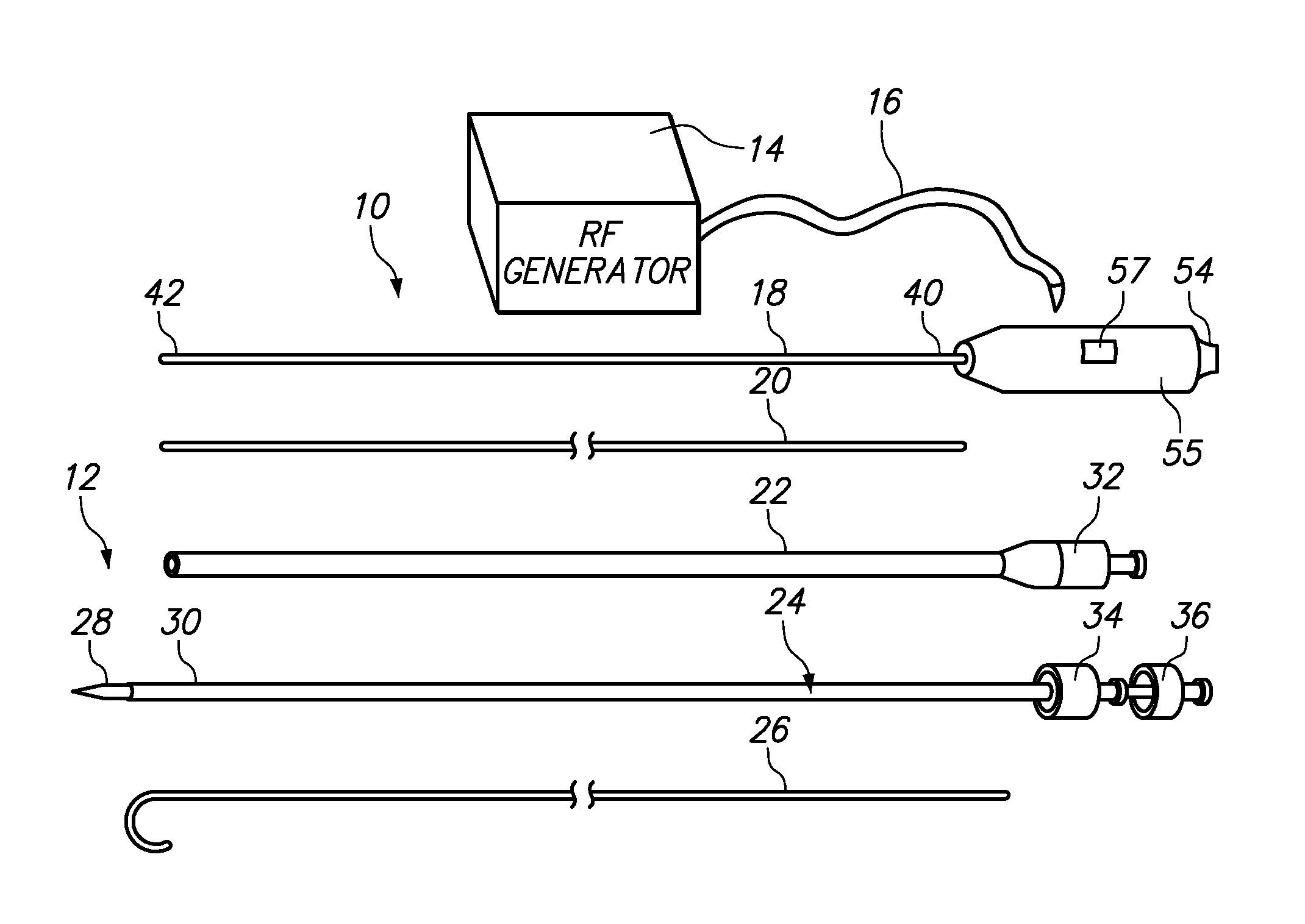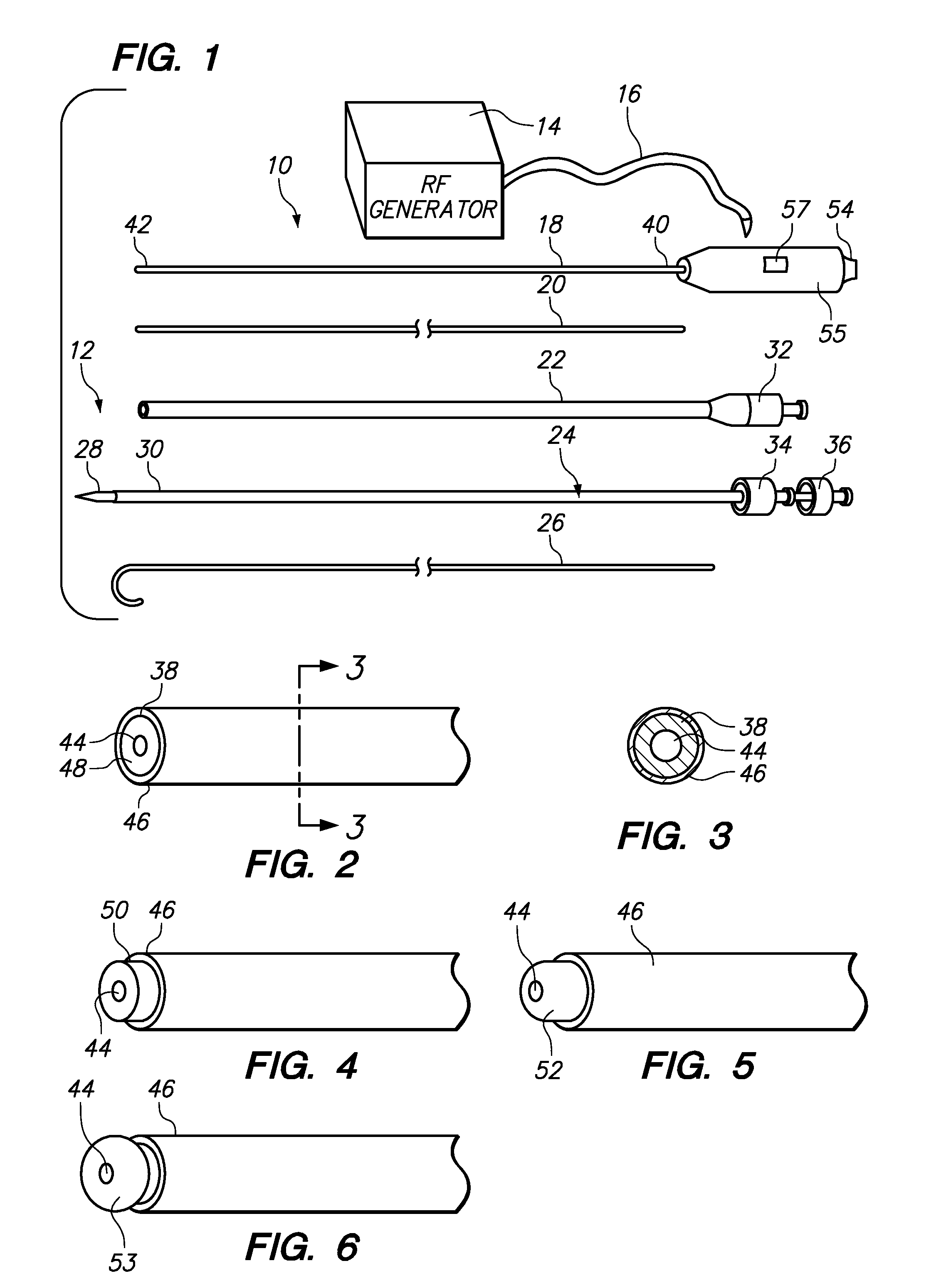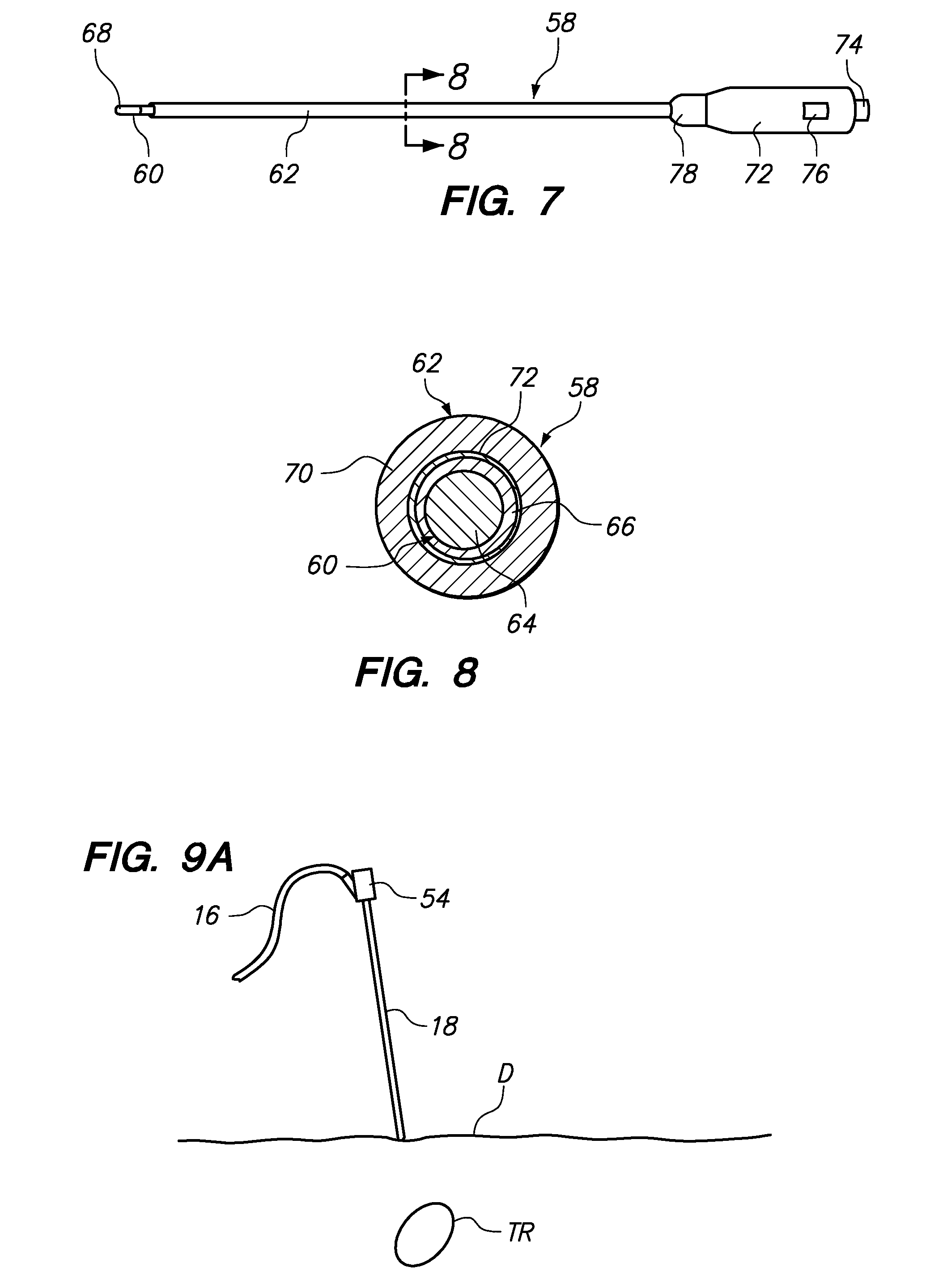[0007]In accordance with a first aspect of the present inventions, a method of percutaneously accessing a patient with an elongated probe, is provided. The probe is preferably one that is conducive to
minimally invasive procedures, e.g., one having a size within the range of 27 gauge and 8 Fr, preferably within the range of 24 gauge to 15 gauge. The method comprises placing an atraumatic distal tip of the probe against the derma of the patient, conveying electrical energy to or from the distal tip to ablate tissue immediately adjacent the distal tip, and advancing the probe through the derma while the tissue immediately adjacent the distal tip is ablated. Thus, it can be appreciated that the atraumatic distal tip of the probe prevents or minimizes accidental needle sticks, while allowing
percutaneous access to a patient on-demand.
[0008]In one method, the electrical energy takes the form of electromagnetic energy, such as
radio frequency (RF) energy. The
power level of the electrical energy may be in the range of 1 W to 50 W, but more often will be in the range of 5 W to 30 W. The probe may include an
electrically conductive shaft and an electrically insulative
coating disposed on the shaft, so that the electrical energy is only conveyed to or from the distal tip. The distal tip to which or from which the electrical energy is conveyed may be relatively small to provide only the
tissue ablation necessary to allow percutaneous advancement of the probe. In this case, the
power level of the electrical energy may be relatively low, e.g., equal to or less than 30 W, and in most cases, equal to or less than 10 W. In one method, the tissue immediately axial to the distal tip is ablated. Any
ablation of tissue immediately radial to the distal tip may be eliminated or minimized to the nature of the distal tip. For example, in one method, any tissue ablated immediately radial to the distal tip is limited to a depth of 1 mm, and preferably 0.1 mm, from the surface of the distal tip.
[0011]In accordance with a second aspect of the present inventions, a method of subcutaneously creating a tunnel through tissue with an elongated probe is provided. The method comprises conveying electrical energy to or from an atraumatic distal tip of the tunneling probe to ablate tissue immediately adjacent the distal tip, and subcutaneously advancing the tunneling probe within the patient while the tissue immediately adjacent the distal tip is ablated. In this manner,
brute force need not be axially applied to the tunneling probe to
traverse fibrous tissue, thereby
minimizing pain and other complications associated with ripping or
cutting through tissue. The natural coagulation effect of the electromagnetic energy may also prevent
blood loss within the resulting tunnel.
[0013]In accordance with a third aspect of the present inventions, a medical probe is provided. The medical probe comprises an elongated, rigid,
electrically conductive, shaft, and an electrically insulative sheath disposed on the shaft to form an exposed atraumatic tip
electrode configured for electrosurgically ablating
solid tissue located immediately axial to the tip electrode to facilitate rapid advancement of the medical probe through the
solid tissue without substantially ablating
solid tissue immediately radial to the tip electrode. The medical probe is preferably one that is conducive to
minimally invasive procedures, e.g., one having a size within the range of 27 gauge and 8 Fr, preferably within the range of 24 gauge to 15 gauge.
[0020]In accordance with a seventh aspect of the present inventions, a
catheter assembly is provided. The
catheter assembly comprises a flexible therapeutic or diagnostic
catheter having an elongated shaft and a lumen axially extending through the catheter shaft, and a flexible guidewire configured for being removably introduced through the catheter lumen. The guidewire has an elongated, electrically conductive, shaft and an electrically insulative sheath disposed on the shaft to form an exposed atraumatic tip electrode that extends from a distal end of the catheter shaft when the guidewire is inserted within the catheter lumen. The tip electrode is configured for electrosurgically ablating
solid tissue located immediately axial to the tip electrode to facilitate rapid advancement of the catheter through solid tissue.
[0027]In an optional embodiment, the
biopsy probe further comprises an atraumatic tip electrode disposed on the other of the cannula and inner shaft, wherein the tip electrode is configured for electrosurgically ablating solid tissue located immediately axial to the tip electrode to facilitate rapid advancement of the
biopsy probe through the solid tissue. In this case, the cannula or inner shaft may include an electrically conductive shaft and an electrically insulative sheath disposed over the conductive shaft to form the tip electrode at the distal end thereof. In another optional embodiment, the cannula or inner shaft is configured for retaining the
cut tissue portion. The
biopsy probe may be included in a
system comprising a source of electrical energy electrically coupled to the biopsy probe.
 Login to View More
Login to View More  Login to View More
Login to View More 


